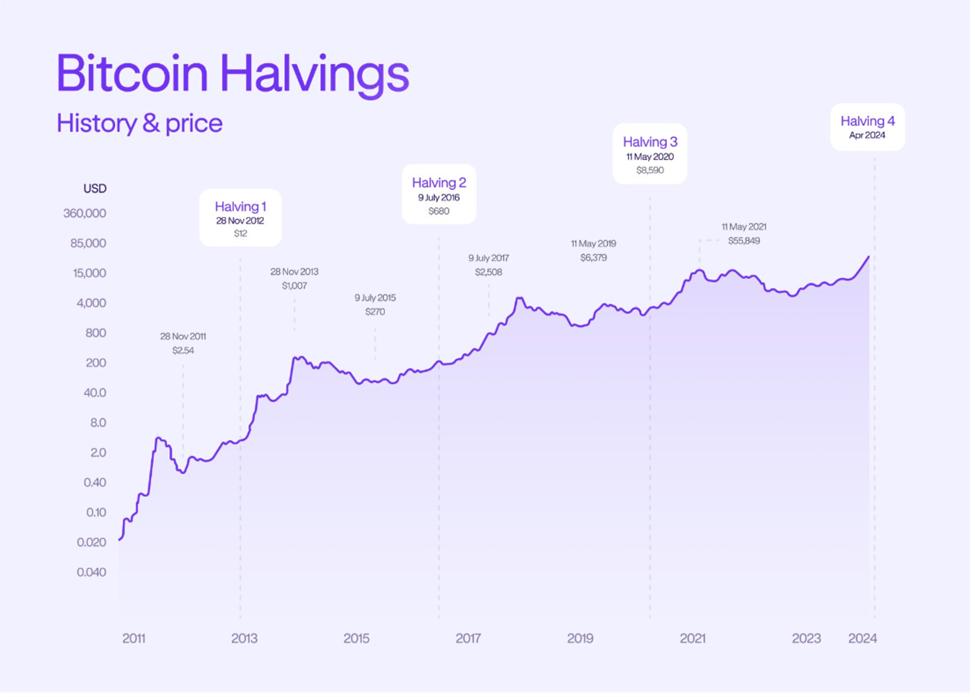Welcome to US Crypto News Morning Briefing—a morning newsletter summarizing the most important crypto developments of the day ahead.
Get your coffees ready because JPMorgan just showed off Wall Street’s shift from spot ETFs to complex Bitcoin Derivative designed around the halving cycle. What you read today could be a hint at a new approach to trading BTC, amid a profound shift in how institutions plan to approach the halving cycle from 2026-2028.
JPMorgan Introduces New Derivative Product for Bitcoin
JPMorgan has filed for a new structured note linked to BlackRock's IBIT Bitcoin ETF . It offers double-digit fixed returns if BTC hits predetermined targets, but investors could lose their entire Capital if the ETF falls more than 30%.
The proposed note, revealed in a recent regulatory filing, is designed based on Bitcoin's four-year halving cycle . The structure offers investors a fixed return of 16% if IBIT hits the bank's price target by the end of 2026, and more than 50% return if it hits the target in 2028.
However, the offer comes with a big caveat: if the ETF falls more than 30% at any point before maturity, investors could lose their entire Capital .
“The Spot ETF saga is over, Wall Street institutions are starting to offer Derivative to everyone,” writes analyst AB Kuai Dong.
Indeed, the model resembles Derivative trading in that the profits do not come from holding Bitcoin or the ETF. Instead, they come from a contract whose payout depends on the performance of the ETF.
Clients never own IBIT or BTC, they would ideally trade with wins and losses based on Bitcoin price performance . On this point, JPMorgan writes a contract as follows:
- If IBIT reaches X in 2026 → you get 16%
- If you reach X by 2028 → you get more than 50%
- If it drops 30% → you lose your Capital
JPMorgan made it clear that these notes “do not guarantee repayment of Capital ,” with losses commensurate with the ETF’s decline once the 30% barrier is breached.
This trade, with its increased upside and risk of total loss, places the note in the high-return/high-volatility category that institutional exchanges typically reserve for sophisticated clients.
Furthermore, it uses barriers and auto-call triggers, the same mechanism applied in equity-linked Derivative products.
The product's unique mechanisms, which differ from what Spot ETFs offer, include:
- Auto call in 2026 = Derivative feature
- 30% Downside Barrier = Derivative Style Risk Protection
- Increased benefit (1.5x) = Derivative leverage
This note offers a 1.5x gain, a textbook Derivative benefit built into traditional banking products. Losing 100% if IBIT falls beyond the 30% barrier is akin to holding a long Call Option that expires worthless when the condition breaks.
Halving Cycle and Product Fit for JPMorgan
Meanwhile, the timing was deliberately chosen as history shows that Bitcoin tends to enter a deep bear market around two years after each halving event .
The last halving took place in April 2024 , with the next contraction expected in 2026, followed by a sharp rebound in 2028, the year of the next halving.
This pattern closely matches the design of the note:
- 2026: If IBIT hits JPMorgan's target early, note automatically calls, paying a fixed 16%.
- 2026–2028: If IBIT remains below target, the note remains active, providing 1.5x leverage benefit with no cap if BTC rises in 2028.
- By 2028: Investors only recover Capital if IBIT avoids a 30% decline.
The launch shows that the era of Spot ETFs is giving way to structured products designed for asymmetric returns, leverage and risk exposure.
Derivative and its potential
These instruments mirror the Derivative products that traditional banks have used for decades in areas like stocks, commodities and foreign exchange, now moving into the digital asset space.
For investors, the appeal lies in the potential for increased returns without directly holding volatile BTC .
However, the risks are equally significant. Bitcoin has experienced 70%-85% price drops historically, and breaking the 30% barrier is not uncommon even in mild bear markets.
JPMorgan acknowledged this in the filing, warning that investors “could lose all” of Capital if the underlying ETF breaks that threshold.
The note approval process will determine how quickly it reaches institutional trading desks, but what does its design signal:
- More Wall Street-developed products,
- Many yield-seeking structures involve Bitcoin ETFs, and
- More traditional Capital is entering crypto through Derivative rather than spot instruments.
As the market approaches the mid-cycle stage of 2026, demand for yield protection and leverage products is likely to increase, making JPMorgan’s move an early look at the next wave of institutional Bitcoin investment.
Intraday chart
 Bitcoin Halving Price Performance History. Source: Harrison Frye, Co-Founder & CGO at Acquire.Fi on X
Bitcoin Halving Price Performance History. Source: Harrison Frye, Co-Founder & CGO at Acquire.Fi on XByte-Sized Alpha
Here is a summary of today's US crypto news:
- Fake delivery man steals $11 million in crypto from Sam Altman's ex's home .
- The Fed in Crypto? Trump's Search for Chairman Takes a Strange Turn
- The strategy argues that even if Bitcoin drops to $25,000 , it won't break their balance sheet.
- A bearish setup could reverse the Bitcoin Dip theory.
- Trump Pardons CZ—Now Binance Faces $1 Billion Terrorism Charges .
- Grayscale's Dogecoin Spot ETF fell short of analysts' targets on opening day.
- BSV financier behind Wirecard? New investigation revives $2.2 billion mystery surrounding Calvin Ayre .
Pre-Market Overview of Crypto Stocks
| Company | Closed on November 25th | Overview before opening hours |
| Strategy (MSTR) | 172.19 USD | 169.30 USD (-1.68%) |
| Coinbase (COIN) | 254.12 USD | 252.88 USD (-0.49%) |
| Galaxy Digital Holdings (GLXY) | 25.48 USD | 25.64 USD (+0.63%) |
| MARA Holdings (MARA) | 11.17 USD | 11.15 USD (-0.18%) |
| Riot Platforms (RIOT) | 14.39 USD | 14.41 USD (+0.14%) |
| Core Scientific (CORZ) | 15.55 USD | 15.52 USD (-0.19%) |








